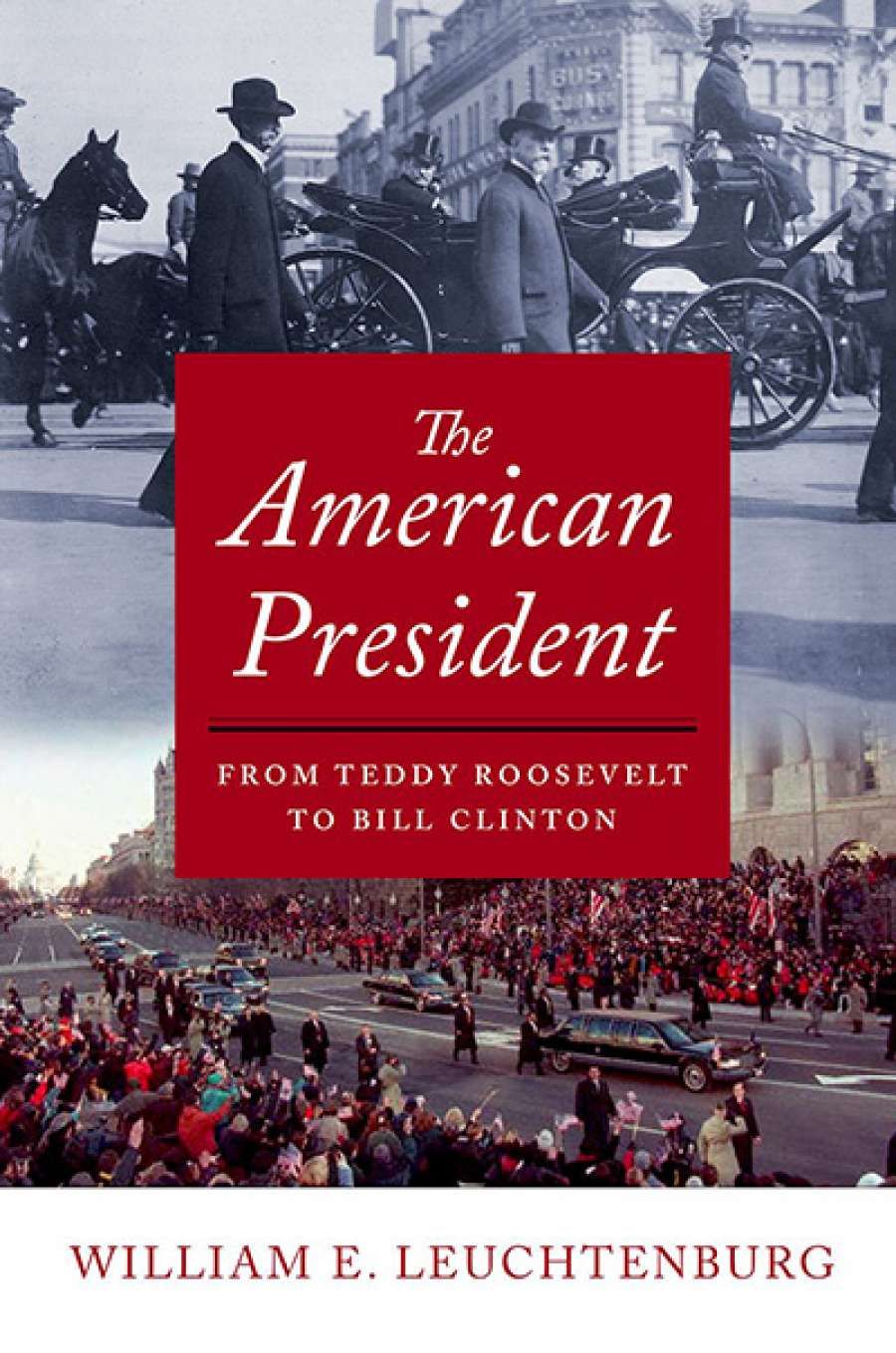
- Free Article: No
- Contents Category: United States
- Custom Article Title: Andrew Broertjes reviews 'The American President: From Teddy Roosevelt to Bill Clinton' by William E. Leuchtenburg
- Review Article: Yes
- Online Only: No
- Book 1 Title: The American President
- Book 1 Subtitle: From Teddy Roosevelt to Bill Clinton
- Book 1 Biblio: Oxford University Press, $49.95 hb, 900 pp, 9780195176162
The presidency of Franklin Roosevelt cemented the changes that had developed from the presidency of his distant cousin Theodore onwards. FDR remains the longest-serving president, winning an unprecedented (and since the advent of the two-term limit, unlikely to be repeated) four terms. Unsurprisingly, his presidency forms the core of the book, as well as its longest chapter. Elected during the darkest moments of the Great Depression, Roosevelt fundamentally altered the way American citizens saw their government and their president. His ‘fireside chats’ on the radio exploited mass media in ways no president had done before, and his voice in living rooms across the United States helped calm a population experiencing the worst economic crisis in the nation’s history. The 1930s saw, at FDR’s hands, the creation of the modern welfare state, as well as the massive public works projects that transformed the United States. In some parts of the nation, the name Franklin Roosevelt meant electricity, clean drinking water, roads, and bridges. He laid the foundation for a style of governing that would remain until the present day, as both Republicans and Democrats sought to echo different aspects of his presidency. And his leadership during World War II was vital in establishing the United States as one of the world’s super powers.
 Richard Nixon on the hustings, 1968 (photograph by Ollie Atkins, The White House)
Richard Nixon on the hustings, 1968 (photograph by Ollie Atkins, The White House)
The presidents who came after FDR had an intimidating legacy to uphold, a point already explored by Leuchtenburg in In the Shadow of FDR: From Harry Truman to Barack Obama (2009). For some, the attempt to achieve sweeping changes both domestically and abroad would come unstuck, as in the case of Lyndon Johnson, whose Great Society programs and early successes with civil rights were counterbalanced by the disaster of the Vietnam War. For others, significant achievements at home and abroad were undone by darker impulses, as Richard Nixon found with the Watergate scandal. That scandal, which led to the unprecedented resignation of the president in 1974, combined with Vietnam to transform the US population into one much more cynical and distrustful of government. As Leuchtenburg notes in his conclusion, for all the positives that US presidents can engage in:
the dark underside of presidential power cannot be ignored. Too often, presidents have lied to us. Too often, they have wasted the lives of our children in foreign ventures that should never have been undertaken. They are both the progenitors and the victims of inflated expectations, and when they overreach, they need to be checked.
This balance between light and shade is perhaps the greatest strength of Leuchtenburg’s work. From the presidential giants of the twentieth century like Harry Truman to the lesser presidents like Warren Harding, each subject is treated with scrupulous fairness by the author. Tying together all of the trenchant analyses are wonderful anecdotes that humanise these historical figures. Ronald Reagan could poke fun at himself, saying at one point that he ‘was concerned about what is happening in government – and it’s caused me many a sleepless afternoon’. When asked if he could bring his wayward teenage daughter into line, Theodore Roosevelt wearily replied: ‘I can be president of the United States, or I can control Alice. I cannot do both.’ And of the taciturn Calvin Coolidge, it was said that he could be ‘silent in five different languages’. Slightly daunting at nearly nine hundred pages, William E. Leuchtenburg’s The American President is a crisp, readable introduction for any reader seeking to learn more about how the US president became the ‘leader of the free world’.


Comments powered by CComment